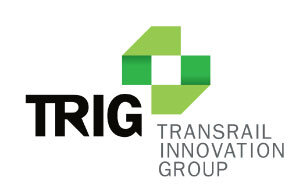TRIG Tips - Optimizing Terminal Transloading
For many Terminal Operators, optimizing their rail tank car transloading processes is a constant challenge, especially relating to getting accurate and reliable commodity level data. After working with many clients, TRIG has identified the following 5 signs that your terminal and transloading processes could benefit from level measurement automation.
Your operation has ongoing challenges with high level probes including breakage and/or process interruptions
Traditional methods for loading and unloading rail tank cars require manual processes for level measurement, including inserting and removing probes, which can easily cause damage to equipment. Using TRIG’s TLoad non-contact radar-based sensor level measurement solutions, your operators will no longer have to manipulate the sensor increasing the usability from an average of 1.5 years with legacy solutions to up to 5 years with TRIG’s TLoad.
You are filling your tank cars to less than 99% allowable capacity
Without having precise readings of the commodity level in rail tank cars, operators have been underfilling by as much as 10%, to avoid overfills and safety risks. With TLoad, you receive accurate heel and volume measurement in real-time, allowing you to dramatically increase your capacity without worrying about overfilling.
You are losing product in your end to end operation, and you don’t know where it is going.
Using traditional level measurement solutions and manual calculations, it is very difficult to access reliable heel data that can be reconciled against other system and process data. TRIG can help integrate TLoad heel and volume data into your existing processes, so you have an accurate view of commodities being loaded and unloaded at any point in time.
Your operation requires tank cars to be opened or weighed to check for heel
Without solutions like TRIG’s TLoad, your operators are required to open tank cars, which is time-consuming and risks exposing them to hazardous commodities. Using the TLoad non-contact radar-based sensor for level measurement, you eliminate the need to open cars or weigh them, reducing the time for loading and unloading, increasing level measurement accuracy, and improving safety processes.
You spend a lot of money on checking and replacing gaskets on your manway
Opening and closing the manway on rail tank cars can lead to frequent gasket replacement, which is expensive and takes rail tank cars out of service. Using TRIG’s TLoad level measurement solutions, you practically remove the need to open and close the manway to measure commodities, avoiding the costs and headache of repairs.





